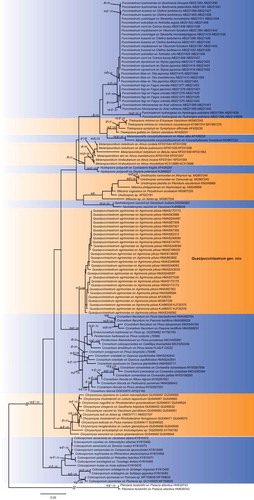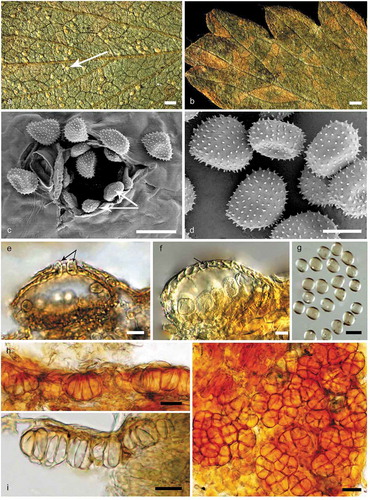Figures & data
Table 1. Herbarium specimens used for molecular phylogenetic analyses.
Table 2. Sequence data retrieved from GenBank and used for phylogenetic analyses.


